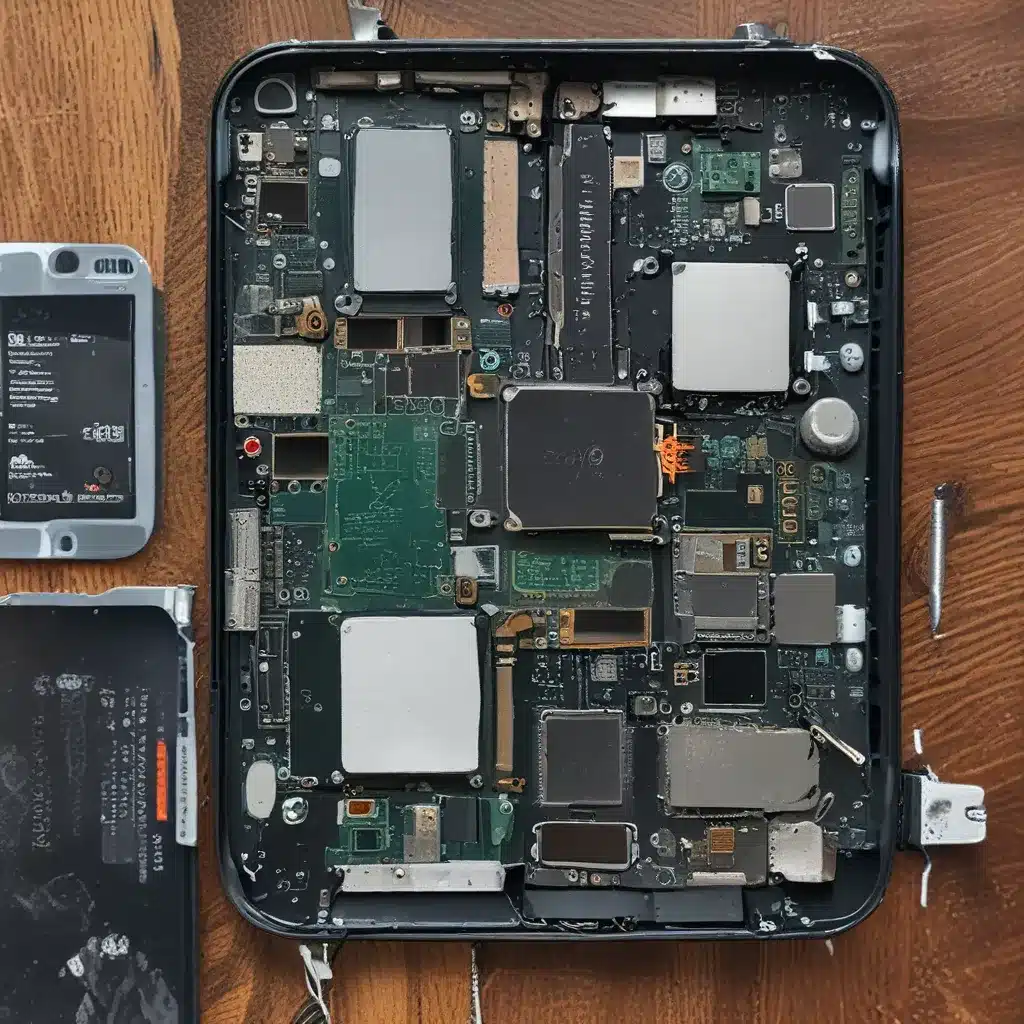Keeping Smartphones Alive: The Power of Repairability
As someone who’s always had a soft spot for technology, I’ve long been fascinated by the world of smartphones. These little pocket-sized marvels have become an integral part of our daily lives, connecting us to the digital realm in ways we couldn’t have imagined just a decade ago. But there’s a darker side to this smartphone revolution – the growing mountain of electronic waste that threatens our planet’s well-being.
It’s a problem that hits close to home for me. You see, I’m the kind of person who likes to tinker and fix things. I can’t stand the idea of throwing away a perfectly good device just because a single component has failed. That’s why the concept of smartphone repairability has always been a passion of mine. And as it turns out, I’m not alone.
The Rise of the Modular Smartphone
Recent studies have shown that modular smartphone design, where individual components can be easily replaced, is a promising way to extend the lifespan of these ubiquitous devices. According to the European Commission, this approach can significantly reduce the environmental impact of smartphone manufacturing and ultimately lead to a more sustainable future for our technology.
But here’s the thing – modular design is only half the battle. As the researchers at the European Commission point out, it’s vital that people are willing to actually repair their devices. After all, what good is a repairable smartphone if no one takes advantage of that feature?
Putting Repairability to the Test
To better understand the role of repairability in smartphone sustainability, the researchers decided to conduct a survey on real-life repair behavior. They focused on a German manufacturer they call “SmartMod” – a company that’s at the forefront of sustainable smartphone design, offering both semi-modular and fully modular devices along with an in-house repair service and DIY repair instructions.
The results were fascinating. Compared to users of conventional smartphones, the SmartMod customers were far more likely to actually repair their devices when something went wrong. In fact, less than 15% of respondents said they had not repaired a damaged modular or semi-modular smartphone, with most citing the ability to continue using the device without repair or perceived effort as the main reasons.
The Power of DIY Repair
One of the standout findings from the study was the prevalence of DIY repairs among SmartMod users. According to the researchers, a remarkable 39% of modular device owners had taken it upon themselves to fix their smartphones, thanks to the company’s support for at-home repairs and well-designed repair instructions.
This is a stark contrast to the barriers that typically discourage people from repairing their conventional smartphones, such as the unavailability or high cost of spare parts, as well as the exorbitant repair charges. But with SmartMod, these hurdles seem to have been effectively cleared, empowering users to take control of their device’s lifespan.
Emotional Attachment and the Circular Economy
But the benefits of smartphone repairability go beyond just reducing e-waste. The researchers also found that the act of repairing one’s own device can foster a deeper emotional attachment to the product, potentially delaying the inevitable replacement down the line.
This aligns with the broader vision of a circular economy, where products are designed to be repaired, upgraded, and ultimately kept in use for as long as possible. As the World Economic Forum has highlighted, the shift from a linear “take-make-waste” model to a circular approach is crucial for tackling the growing mountain of electronic waste.
The Importance of Promoting Repairability
So, what can smartphone manufacturers and retailers do to encourage more sustainable repair habits? The researchers suggest a multi-pronged approach, including actively promoting consumer awareness of repairability and using nudge strategies like “repairability scores” to influence more eco-friendly purchasing decisions.
After all, as the Yale School of the Environment has found, the brand name of a smartphone often matters more to consumers than the actual hardware quality. By putting the spotlight on repairability, we can help shift the conversation and empower users to make more informed choices that benefit both their wallets and the planet.
Unlocking the Potential of IT Device Lifecycles
At ITFix, we’re deeply committed to the principles of sustainable technology. That’s why we’re excited to see the growing momentum around smartphone repairability and the potential it holds for extending the lifecycle of IT devices.
As an IT services company, we understand the importance of keeping our clients’ devices up and running for as long as possible. But more than that, we believe in the power of technology to drive positive change in the world. By embracing the circular economy and championing the repairability of smartphones and other IT equipment, we can all play a role in reducing the environmental impact of our digital lives.
So, the next time your smartphone starts acting up, don’t just toss it in the bin. Consider reaching out to a repair specialist or even giving it a shot yourself. You might be surprised at how easy it can be to breathe new life into your trusty device. After all, the future of our planet may just depend on it.













